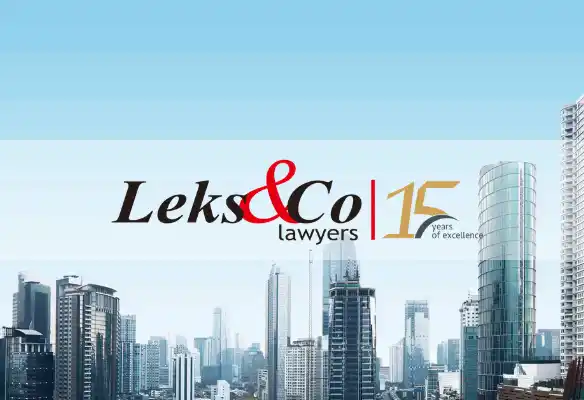
 On 17 May 2022, the Supreme Court issued the Supreme Court Regulation No. 2 of 2022 on Procedures for Resolving Objection by Good Faith Third Party towards the Decision of Asset Forfeiture that is not Belong to the Accused in Corruption Criminal Case (“SC Regulation 2/2022”). The issuance of SC Regulation 2/2022 is hailed by the law enforcers and practitioners, however the regulation does not completely solve the legal issues that were occurred before. This regulation comes into effect on 30 May 2022.
On 17 May 2022, the Supreme Court issued the Supreme Court Regulation No. 2 of 2022 on Procedures for Resolving Objection by Good Faith Third Party towards the Decision of Asset Forfeiture that is not Belong to the Accused in Corruption Criminal Case (“SC Regulation 2/2022”). The issuance of SC Regulation 2/2022 is hailed by the law enforcers and practitioners, however the regulation does not completely solve the legal issues that were occurred before. This regulation comes into effect on 30 May 2022.
Objection on Asset Forfeiture
The good faith third party may file an objection towards the asset forfeiture, if the assets are forfeited to be owned by the state or destroyed. The good faith third party means the valid owner of the asset, where the asset has no relation with the process of corruption crime. It means that the objection that is made under the SC Regulation 2/2022, can only be made if the accused is charged with the corruption crime. In fact, most of the corruption case are also charged with money laundering crime. The issue of asset ownership of good faith third party is remaining unsolved since the money laundering law only allow the third-party objection to the court if the accused is died or cannot be found, and the court decides to forfeit the asset.
Procedure of Objection on Asset Forfeiture
The objection is submitted at the latest 2 months after the court decision is read in the court hearing. The court decision is a decision on corruption case that renders the asset forfeiture, and the objection shall be made to the court that issues the court decision, i.e. district court or military court/high court of military. If the decision is made in appeal or cassation stage, then the objection shall be submitted at the latest 2 months after the excerpt or copy of the decision is (i) informed to the prosecutors, accused, and/or (i) announced on the court’s bulletin board and/or electronically. The objection can only be made one time by the same person.
There are three parties involve in the objection of asset forfeiture, namely, applicant, respondent, and co-respondent. The applicant is the owner, custodian, guardian owner or bankruptcy receiver. The respondent is the prosecutor of corruption case, and the co-respondent is the Minister of Finance. If the forfeited asset owned by bankrupt debtor, the bankruptcy receiver may only file an objection if the bankruptcy decision is issued before the investigation of corruption case. Therefore, the receiver cannot file an objection, if the bankruptcy decision is issued after the corruption investigation proceeds.
The decision of objection on asset forfeiture shall be made at the latest 60 days from the first hearing in the form of court order. The objection is granted if the applicant may prove that:
- the applicant acquires the right of asset before the investigation and/or asset forfeiture;
- the applicant acquires the right of asset based on good faith;
- the object of applicant’s objection is the asset that is forfeited or destroyed in the corruption case;
- and the applicant is not related to the corruption case.
As mentioned above, one of the requirements that need to be proved by the applicant is to prove that the asset is acquired based on good faith. The SC Regulation 2/2022 does not explain the meaning of good faith. Referring to the Supreme Court Circular Letter No. 4 of 2016, there are two criteria of good faith buyer. The first criteria is carried out the sale and purchase of land based on the procedure and valid documents according to the prevailing laws and regulations, such as (i) purchasing the land from general auction, or (ii) purchasing the land before the Land Conveyancing Officer, (iii) for unregistered customary land, purchasing the land based on customary law, and (iv) purchasing the land with decent price. The second criteria is cautious by examining matters related to the land, such as (i) to make sure that the buyer is the valid owner of land right based on ownership evidence, or (ii) the land is not in confiscated status, or (iii) the land is not pledged or in mortgage, or (iv) for certificated land, obtaining information from Land Office and history of legal relationship between the land with the holder of certificate. Even though the above-mentioned criteria are made for good faith buyer in sale and purchase of land, but the criteria can be referred as a guideline for determining whether the forfeited asset is acquired in good faith by the applicant.
Cassation of Court Order
Against the court order, the applicant, respondent and/or co-respondent may file a cassation at the latest 14 days from the reading date of court order, supported with the memory cassation. The court clerk will deliver the memory cassation to the cassation respondent for providing its response. The cassation judges at the Supreme Court shall decide the cassation application at the latest 30 days from the appointment of panel of judges.
Ivor Pasaribu






